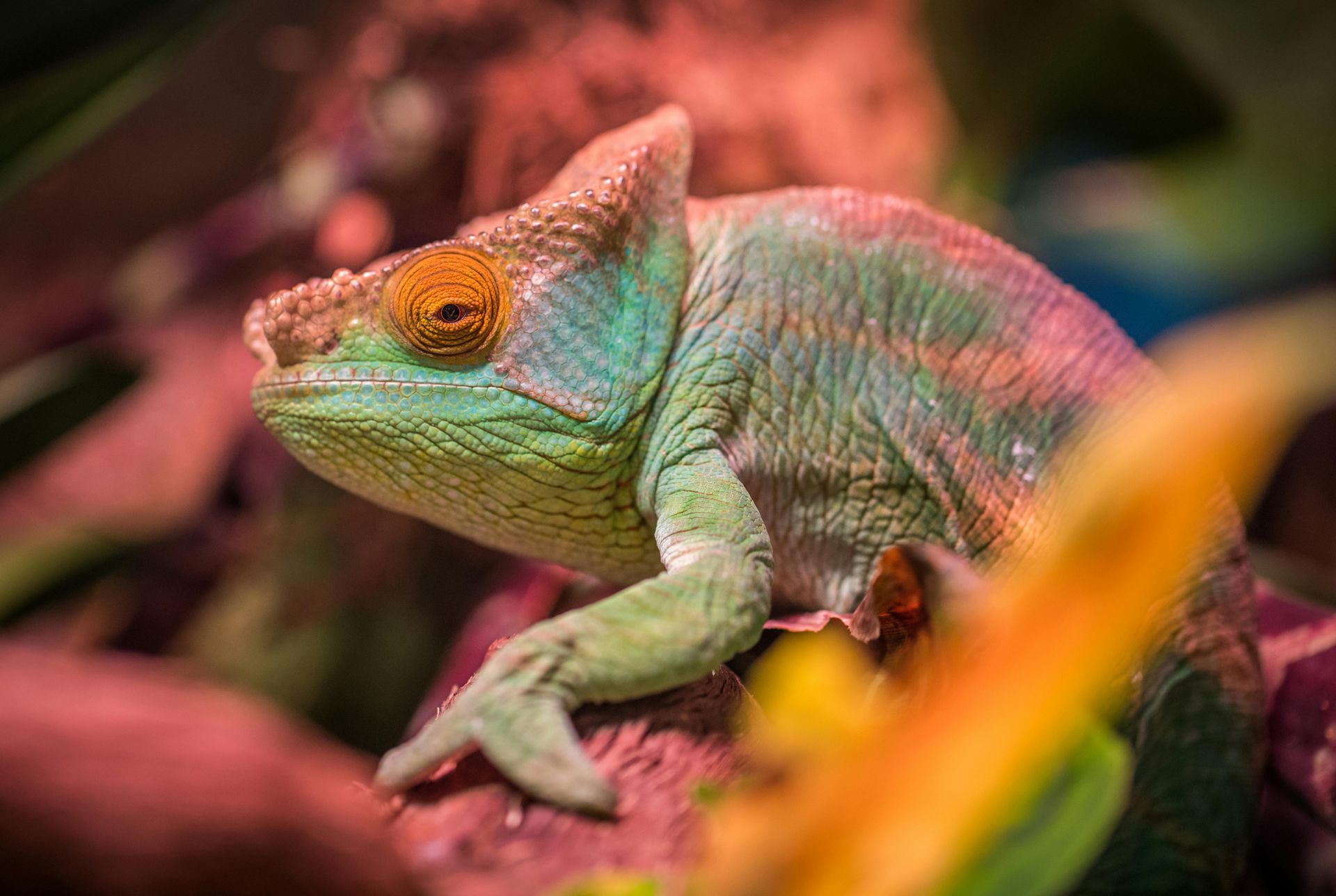The Remarkable Eyes of the Chameleon

Blog vol 5.41. The Remarkable Eyes of the Chameleon.
This week I want to look at the eyes of a very unique animal, a lizard with asynchronous eyes. The big bulging eyes of the chameleon work quite differently from our eyes.
Asynchronous: the eyes do not work together; they do not do the same thing.
Eyes Front - Eyes front for predator and eyes to the side for prey (usually). The chameleon is mostly predator, but it is also prey when it can be seen! It has the uncanny ability to blend scale colours with its surroundings and so is seen rarely, a great strategy for survival. The chameleon’s eyes are located on the side of its head and can go a full 180 degrees from front to back and a full 180 degrees up and down. The position on the side of the head with a shallower eye socket and very muscular lids for protection, makes it possible for the eye to protrude outside the orbit (the cavity in the skull which houses the eye) giving the eye maximum mobility.
Independence - Human eyes work together; where one eye is looking, the other is too. This is good because we always have input from both eyes being processed by the visual cortex and giving us excellent acuity and depth perception. The chameleon’s eyes, on the other hand, can work totally independent of each other. This reminds me of the funny British actor, Marty Feldman, who had seemingly independent eyes (of note, his eyes were affected by Hyperthyroidism). The independent eye movement of the chameleon allows the lizard to be looking in many different directions at the same time, really bad news for the local flying insects or bugs.
But also Synchronous! - The chameleon actually enjoys the best of both worlds: independent eye movement to scan for food, and switch to yoked mode, eyes working together. This gives it increased acuity and depth perception when it needs it. The eyes switch back and forth between the two modes of vision super fast. A real marvel. (Read more here)
As we admire nature and what the chameleon’s visual system is capable of, we can also marvel at our own visual systems. If you have a child and their eyes are not doing the same thing or seem out of line, that is not cool. They are not chameleons. By 5-6 months, a baby’s eyes should settle into working together. If you suspect that your child’s eyes are not together in some way, please bring them by our office for an eye exam (as early as 6 months). No panic necessary, there is usually some good reason for eyes wandering out of line, and there are several things to do, including eye exercises or glasses.
Til next week,
the good doctor






